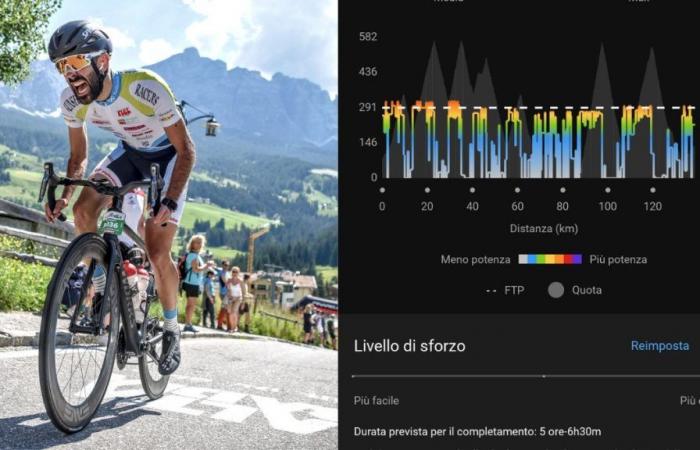If you have a cycle computer in your hands Garmin Edge (1040, 840, 540 Solar and non-Solar) or the latest Edge 1050, and next July 7th you will be at the start of the Marathon of the Dolomitesthe Power Guide It might help you do your best.
This metric is effectively a “Virtual Sports Director” capable of establishing paces and power profiles for a given route in a personalized manner. The goal is to guide the cyclist towards achieving a goal.
I calibrated my Power Guide on long route of the 2024 Maratona delle Dolomiti (138 km, 4,230 metres of altitude difference): on Sunday I will try to pace myself also thanks to this function.
The video below shows the highlights of the Garmin Power Guide.
What does it take to create the Power Guide strategy?
Let’s get into the details.
In addition to a compatible Garmin Edge device and a account Garmin ConnectThere are two essential requirements to create a Power Guide: a power meter and GPS track of the reference route.
In the first case I can count on the Favero Assioma pedals (photo below) while all the *.gpx files of the three Marathon routes are available on the official website of the event.
Click HERE if you want to download the long route track.
Once downloaded (file name GPX_Maratona_Course.zip), simply unzip the folder and import the file into Garmin Connect which will then appear in the section Training & Planning > Routes.
At this point you can proceed to configure the Power Guide directly from the device (Edge 840 Solar in my case) or by remaining in Garmin Connect.
Syncing/sending to the device is still essential.
My Power Guide for the Dolomites Marathon
The power strategy can be applied to all types of routes from a minimum of 15 to a maximum of 400 kmThe reference track is divided into several sections (200 meters is the minimum distance) which in turn are matched to a specific power target.
The values of each single interval (see below) are obtained through the triangulation of distance, altimetry, FTP (click HERE to find out what it is), terrain, position on the bike, weight of the bike with equipment and, last but not least, the level of effort (harder in my case).
Creating a Power Guide strategy from an Edge device via a *.gpx file is simple.
Below are all the steps.
- From the home page select
- Select an option:
Use saved path to use and select a saved route. - Enter a name for the Power Guide, then select √.
- Select a position on the bike.
- Select a bike+gear weight and Effort Goal (Power Guide will automatically adapt the parameters through a quick recalculation).
- To select Salva.
When you find yourself on the starting grid in La Villa, the Power Guide can be activated quickly in this way.
- .
- Select the dedicated Power Guide (you can assign a custom name).
- To select Or.
- Start the activity timer using the dedicated button.
At this point you will always have a screen with the relative monitoring available.
Important detail.
Ideally, you should manually update the FTP value before saving.
Functional Threshold Power (FTP) can be obtained through a VO2 Max test or following a road test (20′ or multiple intervals, some possible combinations in this article).
If you don’t have this data in hand, don’t worry!
There may be quick and painless alternatives:
– the power curve with FTP estimated by Strava (feature available on subscription);
– the estimate provided directly by your Edge (291 watts in my case).
In the latter case it is mandatory to enable the FTP automatic calculation (Lost Statisticsnali>Power>FTP>•••>Automatically detect FTP) and consequently accept the value proposed by the device at the end of an activity.
The reference value will appear as W/Kg (4.1 W/Kg for me).
Note that both Strava and Garmin return FTP values that are not very different…
Additionally, if you also own a Garmin Forerunner watch (I’m currently using a Forerunner 965), by syncing the data you will be able to view this parameter directly from the dial.
In short, the time for chit-chat is over and we need to be ready to push on the pedals. The Power Guide strategy can be a very useful function to enjoy the Maratona delle Dolomiti as well as making the most of our Edge device.
See you in Corvara!
For more information: support.garmin.com/it
HERE all the news, tests and insights on Garmin devices.
And when the road goes up there is another function that can help us. All the details below.
Garmin Climb Pro: what it is, how it works, how to set it up



